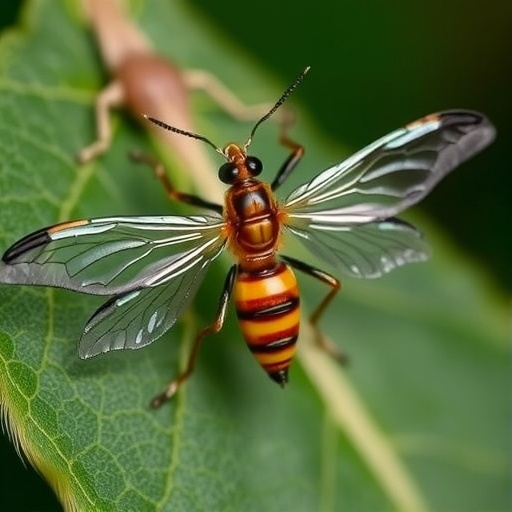Freshwater ecosystems play a crucial role in maintaining global biodiversity and are essential for human well-being. However, these environments face numerous threats, including pollution from various industrial sources. One particularly harmful pollutant is tributyltin chloride (TBTCl), a compound that has been widely used in antifouling agents for ships and boats. Recent research has highlighted the negative impacts of TBTCl on aquatic life, raising alarms about its ramifications for environmental and human health.
A groundbreaking study led by Nath Sharma and his team explored the biological responses of the freshwater bivalve mollusk, Lamellidens marginalis, when exposed to TBTCl. This species has been identified as a valuable sentinel organism for assessing the health of freshwater habitats. The findings demonstrated significant alterations in shell composition, which serve as indicators of environmental toxicity, thereby providing critical insights into the mechanistic pathways underlying pollution damage.
This research provides an insightful examination of how TBTCl affects Lamellidens marginalis at both physiological and biochemical levels. The researchers noted that exposure to this toxic compound led to discernible changes in the shell structure of the bivalves, including variations in mineral content and thickness. These alterations can severely impact the organism’s overall health and fitness, as the shell serves as a fundamental structure for protection against predators and environmental stressors.
Additionally, the study measured the biomarker response index in these mollusks, showcasing the physiological stress responses elicited by TBTCl exposure. Such biomarkers are imperative for assessing the pollutant’s impact not only on individual organisms but also on the broader ecosystem. The results clearly indicated an adverse reaction in the bivalves’ metabolic processes, leading to compromised immune function and increased mortality rates in highly contaminated environments.
The implications of these findings are profound, suggesting that TBTCl pollution poses a significant risk not only to Lamellidens marginalis but also to other freshwater aquatic organisms. As this bivalve species plays a vital role in the trophic web, its health is indicative of the overall health of the freshwater ecosystem. Therefore, monitoring TBTCl levels in these habitats could serve as an early warning system for ecosystem degradation, enabling stakeholders to take corrective actions before problems escalate.
Interestingly, the study highlights the need for stricter regulations on the use of TBTCl to protect vulnerable freshwater habitats. Though this compound has been banned or restricted in many countries, its persistence in the environment remains a concern. The ability of TBTCl to accumulate in sediments poses long-term risks, which means that industries must adopt safer alternatives to avoid similar ecological disasters.
In conducting this research, the team utilized advanced analytical techniques to assess the effects of TBTCl on shell composition. High-resolution imaging and chemical analysis allowed them to pinpoint the specific changes in calcium carbonate structures that resulted from exposure. This meticulous approach proved instrumental in understanding the intricate relationships between pollutants and biomineralization processes in bivalves.
The research also opens the door for further studies to investigate other freshwater species’ responses to TBTCl and similar contaminants. Given that freshwater ecosystems consist of diverse organisms, understanding how these pollutants vary in their impacts can inform conservation strategies and public health policies. This line of inquiry is not only scientifically important but also socially relevant as it emphasizes the interconnectedness of environmental health and human well-being.
With the growing concern over water pollution globally, studies like this one underscore the urgency of addressing chemical contaminants in our freshwater systems. The research advocates for collaborative efforts among scientists, policymakers, and environmentalists to introduce sustainable solutions that safeguard these vital ecosystems. Strategies could include habitat restoration, pollution remediation, and public awareness initiatives to minimize further environmental degradation.
Overall, the findings from Sharma et al. remind us of the delicate balance within freshwater ecosystems and our responsibility in maintaining that balance. Their work serves as a call to action for both scientific communities and regulatory agencies to prioritize research and policies that protect aquatic biodiversity. This is essential not only for conserving species like Lamellidens marginalis but also for ensuring access to clean water for future generations.
In conclusion, the impacts of TBTCl on freshwater ecosystems represent a significant challenge that requires immediate attention. By understanding the responses of sentinel species like Lamellidens marginalis to pollution, we can better gauge the health of our vital water resources. This study not only illuminates the intricate dynamics of environmental toxicity but also reinforces the imperative to act decisively to mitigate the effects of pollution in the natural world.
The exploration of biomarkers and shell composition in Lamellidens marginalis stands as a testament to the resilience of science in addressing contemporary environmental challenges. It is through such research that we can hope to cultivate a sustainable coexistence with our planet’s aquatic systems. The findings pave the way for future research efforts that will revolve around understanding the long-term consequences of chemical exposure in freshwater biota.
As greater scrutiny is placed on environmental pollutants, studies like these not only enrich our scientific literature but reinforce the need for interdisciplinary collaboration in tackling the multidimensional nature of pollution and its effects on ecosystems. The path forward demands innovation, responsible governance, and collective action towards restoring the integrity of our water bodies, benefitting both wildlife and humanity at large.
Subject of Research:
Effects of TBTCl on Lamellidens marginalis and freshwater ecosystems.
Article Title:
Freshwater Lamellidens marginalis as sentinels of TBTCl toxicity: Changes in the shell composition and biomarker response index.
Article References:
Nath Sharma, S., Parida, A., Pradhan, S.P. et al. Freshwater Lamellidens marginalis as sentinels of TBTCl toxicity: Changes in the shell composition and biomarker response index.
Environ Monit Assess 197, 1241 (2025). https://doi.org/10.1007/s10661-025-14693-0
Image Credits: AI Generated
DOI: N/A
Keywords: TBTCl, Lamellidens marginalis, freshwater ecosystems, pollution, biomarkers, environmental health.




